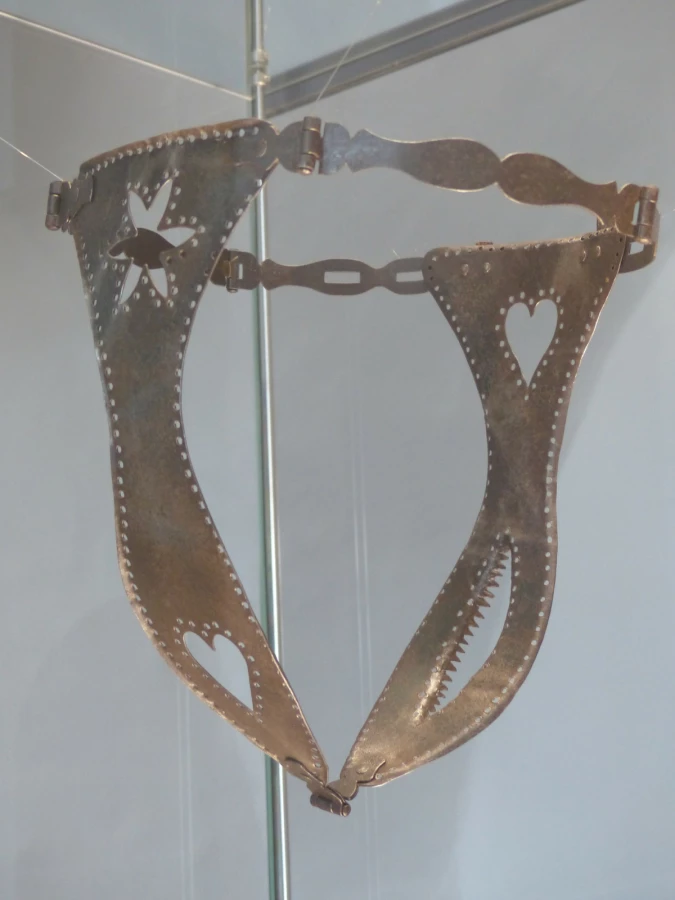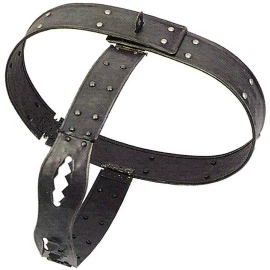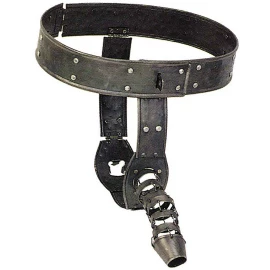Chastity Belt Was Meant for Protection, but it Became a Tool for Torture

Contents
Let's start at the beginning. The prevailing opinion among people is that the chastity belt was created by knights to preserve the faithfulness their wives while they were away. This is reportedly true for the Crusaders, who used chastity belts before they left for a Crusade in the Holy Lands. However, there is no credible evidence that chastity belts were used like this. The words “chastity belt”, however, do appear in literature, but that does not prove the existence of this metal device as we know it from the Museum of History. It could just as well be a metaphorical promise from his wife that she would remain faithful to her husband during his absence.
Where chastity belts do appear regularly are exhibitions dedicated to torture practices. Some of the belts were lined with sharp points and they might look very scary. But the reality is completely different from what is seems to be. Most of such pieces were forged in the 19th and 20th centuries. Despite all this, this topic remains captivating.
Did Chastity Belts Even Exist the Middle Ages?
We would expect chastity belts under the skirts of princesses. And there are a lot of jokes about them. You will probably be familiar with the story of the king leaving for battlefield and entrusting the key to his wife's innocence to his most loyal squire. Before he vanishes behind the corner, the squire comes running after him, saying that the key does not fit into the lock. Jokes aside. According to historians, something like that could not have happened. Simply because chastity belts did not exist in the Middle Ages. So when did they appear?
We imagine the belt as leather or metal harness, which the woman had to put on, and it was locked, so the woman was not able to take it off. The first mention along with a drawing of such a belt can be found in a manuscript from the 15th century, but no chastity belt like we see on the picture has ever been found. Historians believe that it was a joke by the author, because in the rest of the manuscript, he discusses military tactics. The drawing thus does not look credible, as if the author wanted to make sure that nobody takes it seriously. We know a few jokes about chastity belts from that time, so it is possible they existed, there is just no evidence to back it up.
The First Chastity Belt Was Found by an Antique Collector
One of the first discoveries of a controversial tool occurred in the 19th century in Linz. The man called Pachinger, a local antique dealer, discovered the grave of a 16th century woman wearing a chastity belt. It is rather curious that someone would put a chastity belt on a dead woman. Another curious fact is that this item went missing later, just as most of Pachinger’s antique items. There is also not a single mention of the deceased woman in the city archives.
Many other discovered chastity belts had the same fate. The topic of sex is still rather controversial, and, in the past, it was considered a taboo. Many chastity belts that belonged to famous historical characters, such as Anne of Austria or Catherine de' Medici, have been removed from museums and stored away, in order to avoid the scandal that exhibiting chastity belts usually brings. Moreover, it is still unclear whether these artifacts are historically authentic.
It would seem that the stories around the chastity belts are mere fairy tales, but this is not entirely true. Reliable evidence of their existence comes from no sooner than the Renaissance period, which is several centuries later than people normally date them. It is therefore clear that these instruments must have been very rare.
What Were They Really Used for?
The chastity belt, as the name suggests, was not designed to protect women from abuse or infidelity. Instead, they were meant as a prevention of masturbation. This is backed up by a number of patented belts against masturbation from the USA. In times of industrial revolution, it is also highly likely that women used belts as a protection against rape, because working in a factory often involved sexual assaults on female workers.
Male Chastity Belts
Do you think that similar instruments are a matter of the past, slowly falling into oblivion? Then you are wrong. The unorthodox toy has become a part of the sexual practices of BDSM lovers, which, loosely translated, means role-playing, requiring discipline, domination, slavery and submission of one partner over the other. Chastity belts are therefore the ideal means of controlling the pleasure of a partner.
Certain stereotypes are a matter of the past. Not only women use chastity belts for fun and pleasure today. Male chastity belts were created and it used by a certain subculture perhaps even more often than the female belts. It is smaller, in many ways more practical. In contrast to female belts, which runs around the waist and lap, the male variant of the belt looks like a cage for male genitals. It does not allow the man to satisfy himself without pain. There is also a variant of the Florentine type, which is made to measure for the wearer. It looks like a kind of shield around the waist, which runs between the legs and covers the genitals.
Forget the Middle Ages
It is perhaps pointless to delve into more details, so let us end by summarizing a few facts. In addition to chastity belts for women, there is also a male variant. The tool does not come from the Middle Ages, it did not only serve as protection against rape, and it is still used today!






Comments (2)
Why is there hearts on the one opening in the anal region and one in the abdominal region?
I believe that it was photographed from the rear, so its backwards.